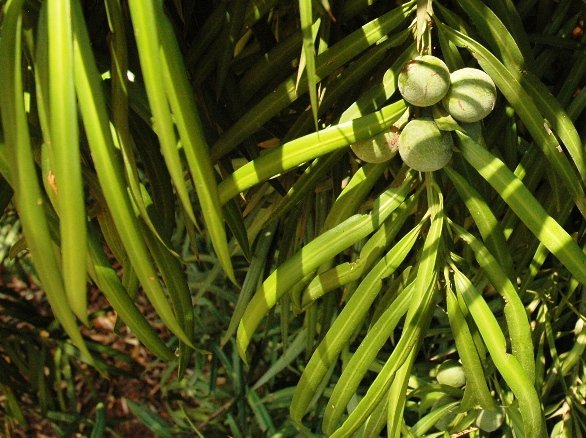Podocarpus henkelii

Author: Ivan Lätti
Photographer: Johan Wentzel
Podocarpus henkelii, commonly Henkel's yellowwood or the drooping-leaved yellowwood, is a large, erect, evergreen tree occasionally reaching heights beyond 20 m (SA Tree List No. 17).
The characteristic long, narrow, curved and drooping leaves are alternate, tapering at apices and bases. The leaf margins are entire, finely and tightly rolled under. The leaf dimensions are up to 17 cm long and 1 cm wide. The leaves are stalked.
The tree is dioecious and a conifer, not a flowering plant. Podocarpus forms part of the Gymnosperms that differ from the Angiosperms or flowering plants. So, these large, light green ovoid to spherical objects are the single seeds developed from ovules in seed cones on female trees. The swollen, fleshy, greenish receptacles develop into seeds, pale green or olive green, resembling fruits found on plants that bear flowers. They are considered to be fruit and food by hungry birds, particularly Knysna louries or touracos and Cape parrots that eat them and oblige to disperse the seeds. The first seeds of a season are usually infested by beetle larvae, later ones usually viable.
The species distribution is in the east of the Eastern Cape and the south of KwaZulu-Natal, also the east of Lesotho.
The habitat is moist evergreen forests in mountainous areas, to some extent also coastal forests. The habitat population is deemed of least concern early in the twenty first century.
The trees retain lower branches and are used for wind and shelter screens. The attractive trees are widely planted in parks and gardens (Coates Palgrave, 2002; Van Wyk, et al, 2000; Pooley, 1993; iNaturalist; http://redlist.sanbi.org).

